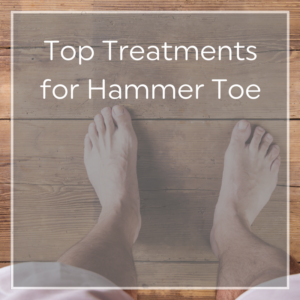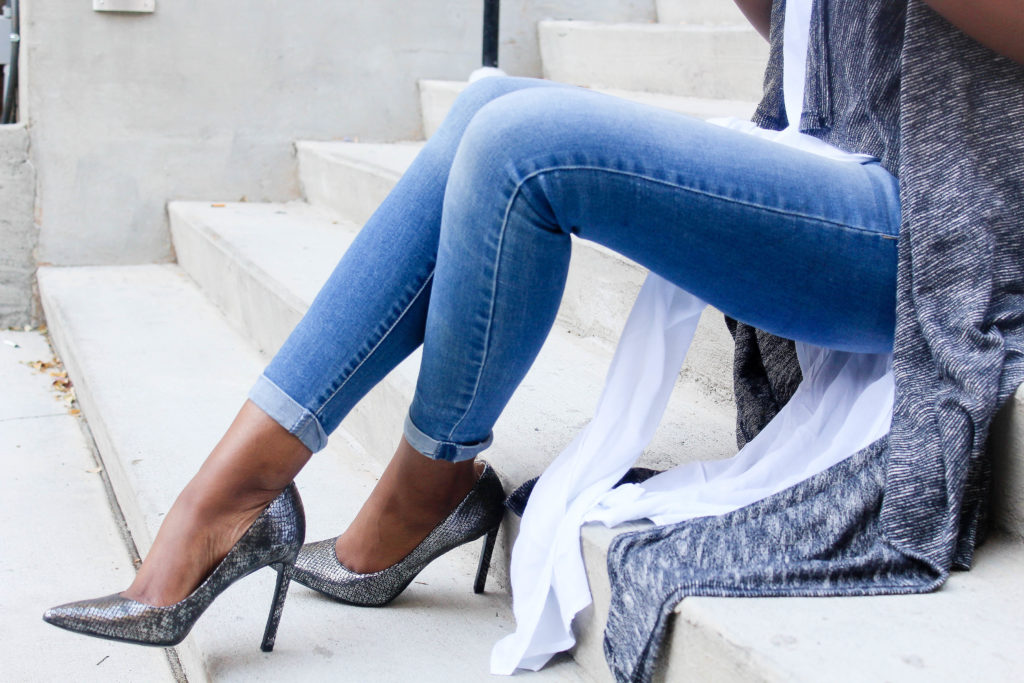 Hammer toe, also known as “rotated toe,” is a condition that causes the middle joints of the toes to curl downward instead of straight forward. More than 200,000 cases of hammer toe are treated annually in the United States, and while most are successfully resolved with at-home conservative treatment methods, severe cases of hammer toe can require surgery.
Hammer toe, also known as “rotated toe,” is a condition that causes the middle joints of the toes to curl downward instead of straight forward. More than 200,000 cases of hammer toe are treated annually in the United States, and while most are successfully resolved with at-home conservative treatment methods, severe cases of hammer toe can require surgery.
What are the symptoms and causes of hammer toe, and what are the top home treatment methods for successfully restoring your toes to a healthy position? Read on!
Symptoms of Hammer Toe
The hallmark of a hammer toe is a toe that is bent downward at the middle joint (the “knuckle: of your toe.) The toe adjacent to your big toe is most commonly affected by this condition.
The first symptom you’re likely to notice is one or more toes that seem to have trouble lining up straight with the rest of your toes while your foot is flat and relaxed. As the condition progresses, you may notice corns or calluses, caused by additional friction and rubbing from the unnatural position, and difficulty or discomfort while walking. You’ll also likely notice that it becomes increasingly difficult to move or wiggle your toes. Some people confuse hammer toe with bunions, since both involve toes that bend at unnatural angles, and the two conditions can occur simultaneously. However, a bunion causes the swelling at the base of the big toe, which makes the toes point inward toward the second toe, rather than downward.
If your hammer toe symptoms are new and mild, it’s highly likely that you’ll be able to successfully treat your hammer toe at home. If your symptoms are severe, it’s important to see a doctor.
Causes of Hammer Toe

Overwhelmingly, the most common cause of hammer toe is ill-fitting footwear. High heels are a particularly notorious culprit of hammer toe, since they cause a great deal of pressure on the toes as they are pressed downward into the tight front of the shoe. Wearing shoes that are too tight, exaggerate the arch of the foot, or place pressure on the toes or ball of the foot can all lead to hammer toe.
Other causes of hammer toe include foot injuries, very high foot arches, tight or misaligned tendons and ligaments throughout the foot, or having a family history of hammer toe. If you develop a bunion, a condition that causes your toes to bend inward (rather than downward), you should be especially vigilant to signs of hammer toe. With the toes bent at an unnatural angle from the bunion, they are more susceptible to hammer toe.
Home Remedies for Treating and Preventing Hammer Toe
If your hammer toe is being caused by ill-fitting footwear, the most important step you can take in treating it is to immediately stop wearing the footwear. Trade the problem shoes for footwear that has plenty of room in the toe box, supports your heel and insole, and does not force the toes downward into the toe box.
If you believe that high arches or a weak and strained arch from wearing unsupportive footwear may be the cause of your hammertoe, wearing orthotic inserts to support your arch properly can help relieve pressure and strain on your toes.
Gently stretching and separating your toes with toe separators can be a simple and effective way to realign the foot and toes, gently stretch the muscles and tendons, improve circulation for healing, and bring the toes back to a correct, uncurled position.
With rest, properly fitting footwear, toe separators, and orthotics, most cases of hammer toe can be resolved simply and easily at home. However, if you find that you are unable to move the curled toes at all, or are experiencing great discomfort while walking, it’s important to see a doctor to put you back on the track to recovery!




The information was very helpful.
The information was helpful. Taking care of hammertoes at home was the first care and preventing article I have seen. The more I know, the better my treatment.